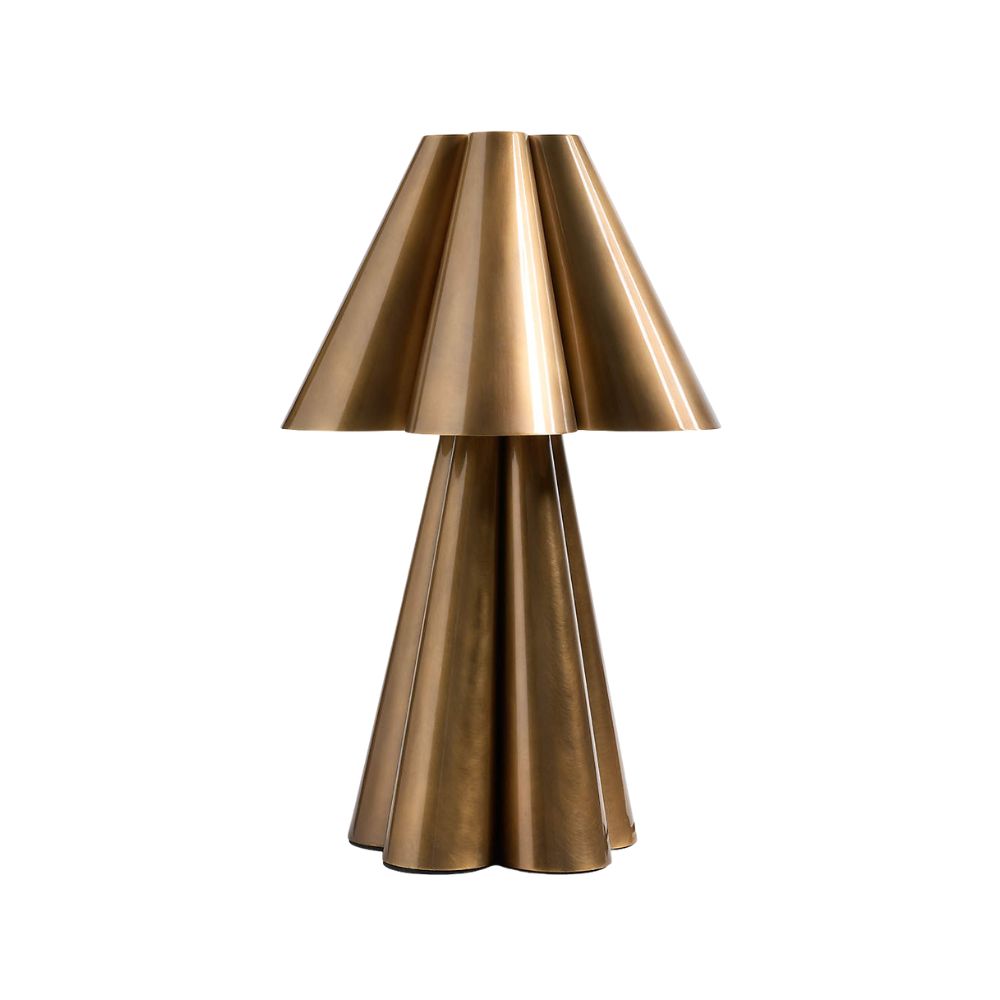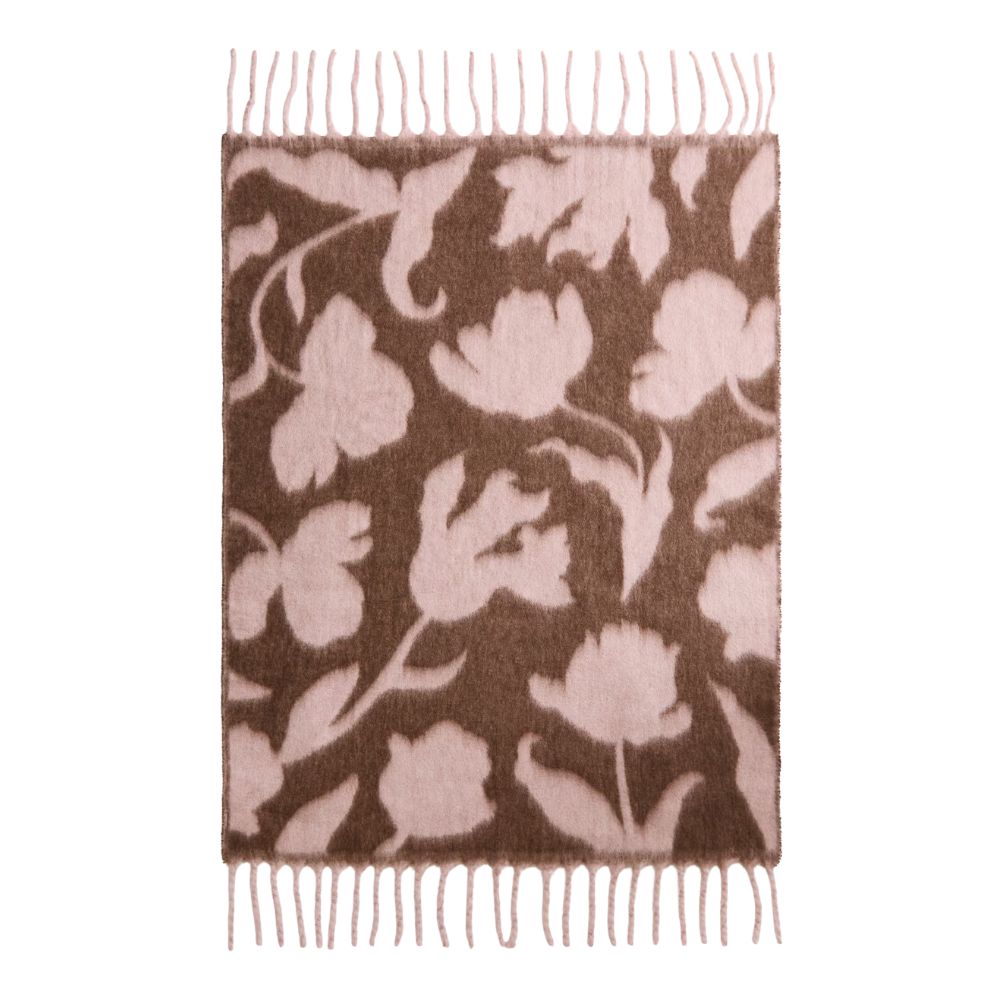15 chic and cozy living room ideas to help you snuggle up in style this fall
Whether you’re refreshing for winter or creating year-round comfort, these ideas will make your living room feel instantly more inviting

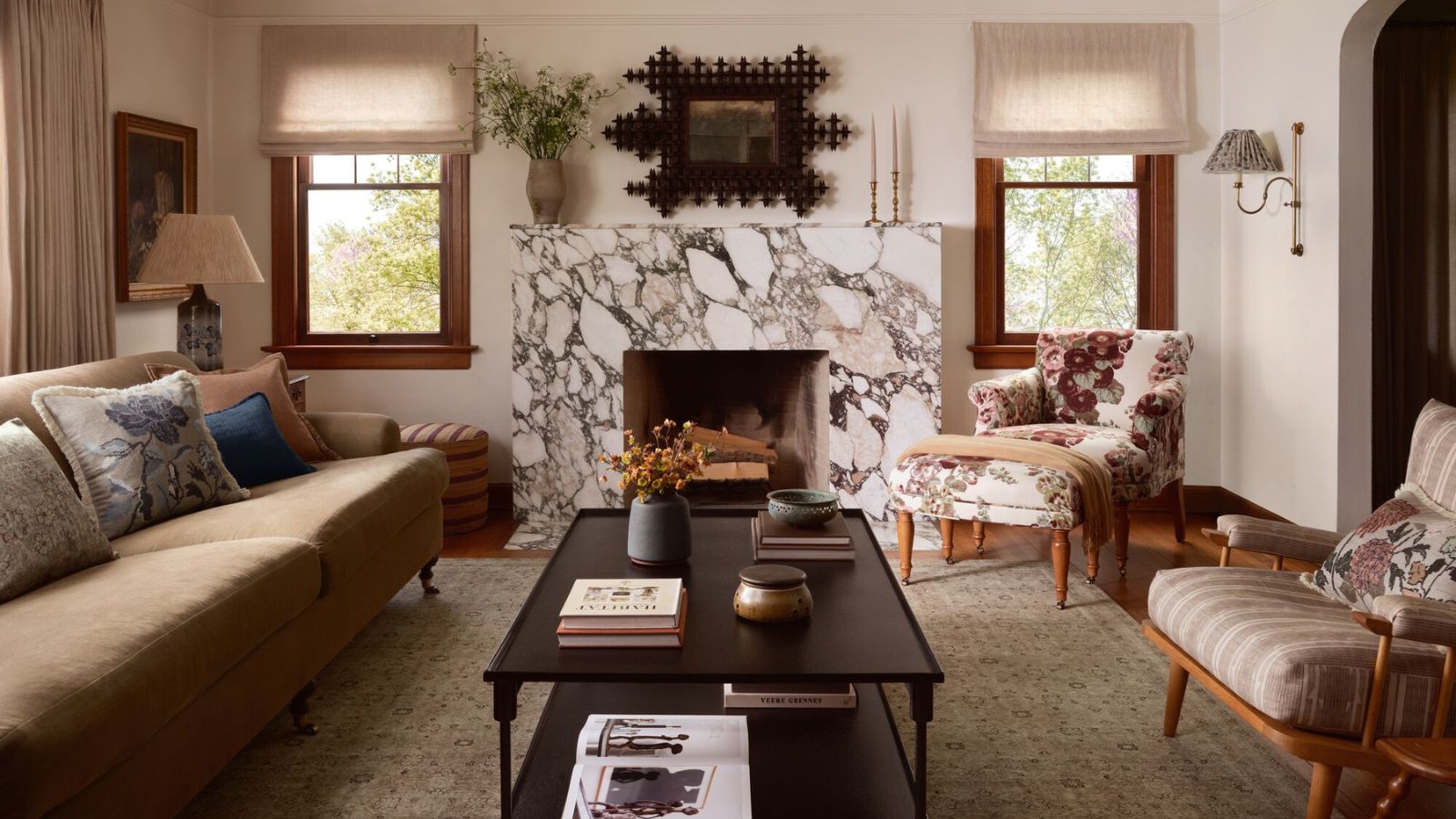
- 1. Rethink the layout to create a cozier space
- 2. Layers, layers, layers
- 3. Choose a warm color scheme
- 4. Play with texture
- 5. Soften with plenty of throw pillows
- 6. Add extra warmth and comfort with plenty of blankets
- 7. Add warmth underfoot with rugs
- 8. Create a layered lighting scheme
- 9. Choose skirted furniture
- 10. Bring the outdoors in
- 11. Shop vintage for characterful pieces
- 12. Swap your drapes for something heavier
- 13. Wrap the room in fragrance
- 14. Create a cozy corner for reading
- 15. Finish with personal touches
Creating a cozy living room starts with a sense of comfort. A cocooning and calm atmosphere doesn't just happen by accident; it requires a delicate balance of design, ambiance, and creative decorating ideas.
To create a warm and welcoming living room in time for fall, according to interior designers, there are many ways you can switch up your space in as little as a weekend. From plush fabrics and layered textures to soft lighting and the grounding effect of color, these small details all come together to create a space designed for retreating into.
After all, the goal isn’t just to create a room that looks chic, but one that genuinely makes you want to curl up and stay awhile. Here, we spoke to the experts for their best cozy living room ideas that are not only stylish but also soothing, restorative, and undeniably inviting.
15 cozy living room ideas to try this fall
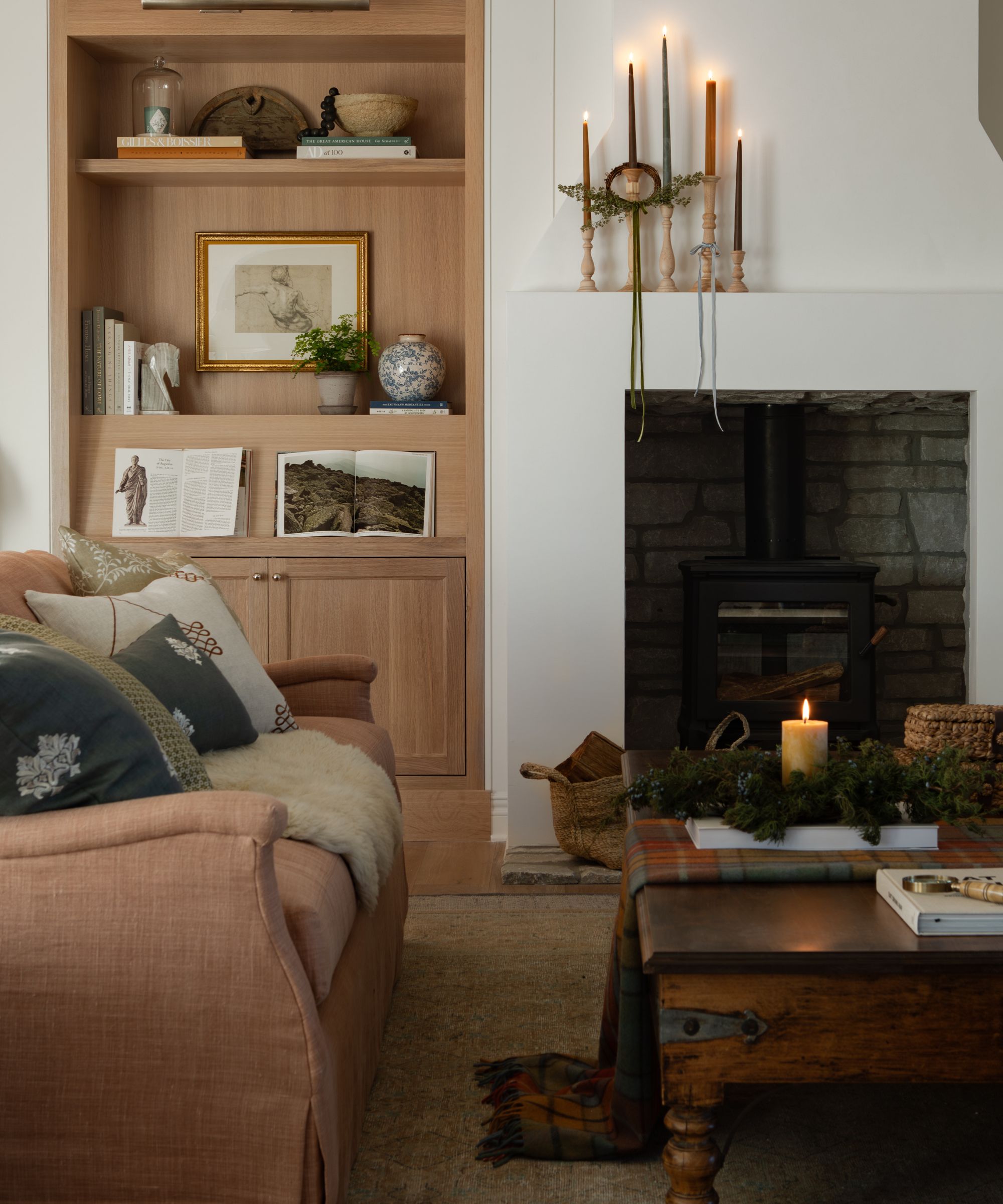
Incorporating cozy decor into your home isn't just about aesthetics – it's about creating a space that feels welcoming, lived in, and full of personality. A room where you can truly relax and feel like yourself. These are our very best tips.
1. Rethink the layout to create a cozier space
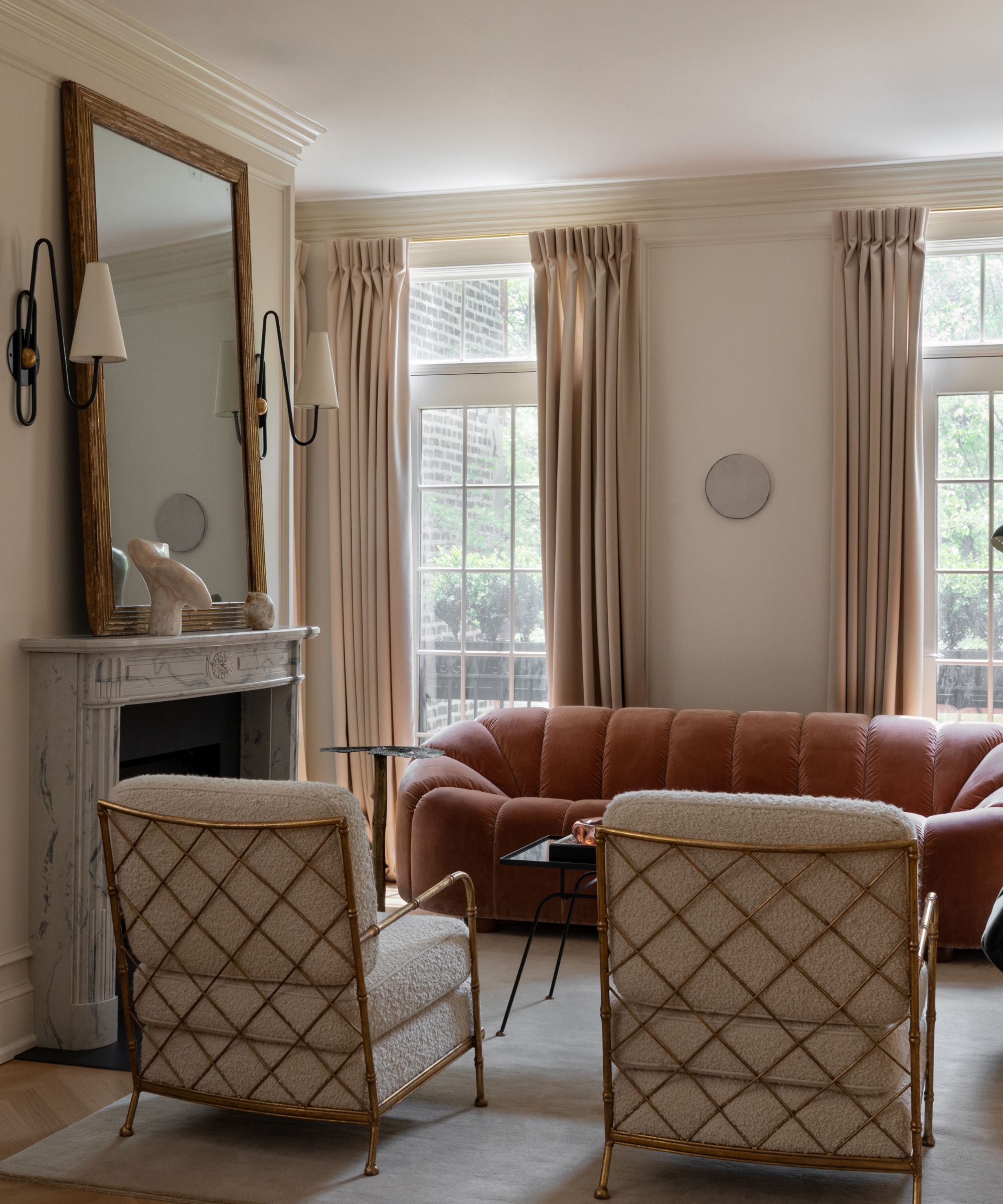
There are plenty of quick and easy ways to make a space look cozier, but tweaking your living room layout with comfort in mind will ensure that your space really feels like a fresh destination for fall.
While many of us prioritize arranging the space with the TV as the focal point, a fireplace is the far more inviting option and far better suited to creating a cozy ambiance.
Interior designer Catherine Staples, lead designer of Aspen & Ivy, advises: ‘Ground the room with a large area rug and incorporate as much seating as possible. The rule of thumb is the conversation circle should not exceed 10 feet (3m) in diameter; all seating should sit within, otherwise, if outside the circle, no one feels connected,’ she explains.
Design expertise in your inbox – from inspiring decorating ideas and beautiful celebrity homes to practical gardening advice and shopping round-ups.
Adding some mantel decor to your fireplace will draw your attention to the area, and it is the perfect excuse to play around with fall mantel ideas.
2. Layers, layers, layers
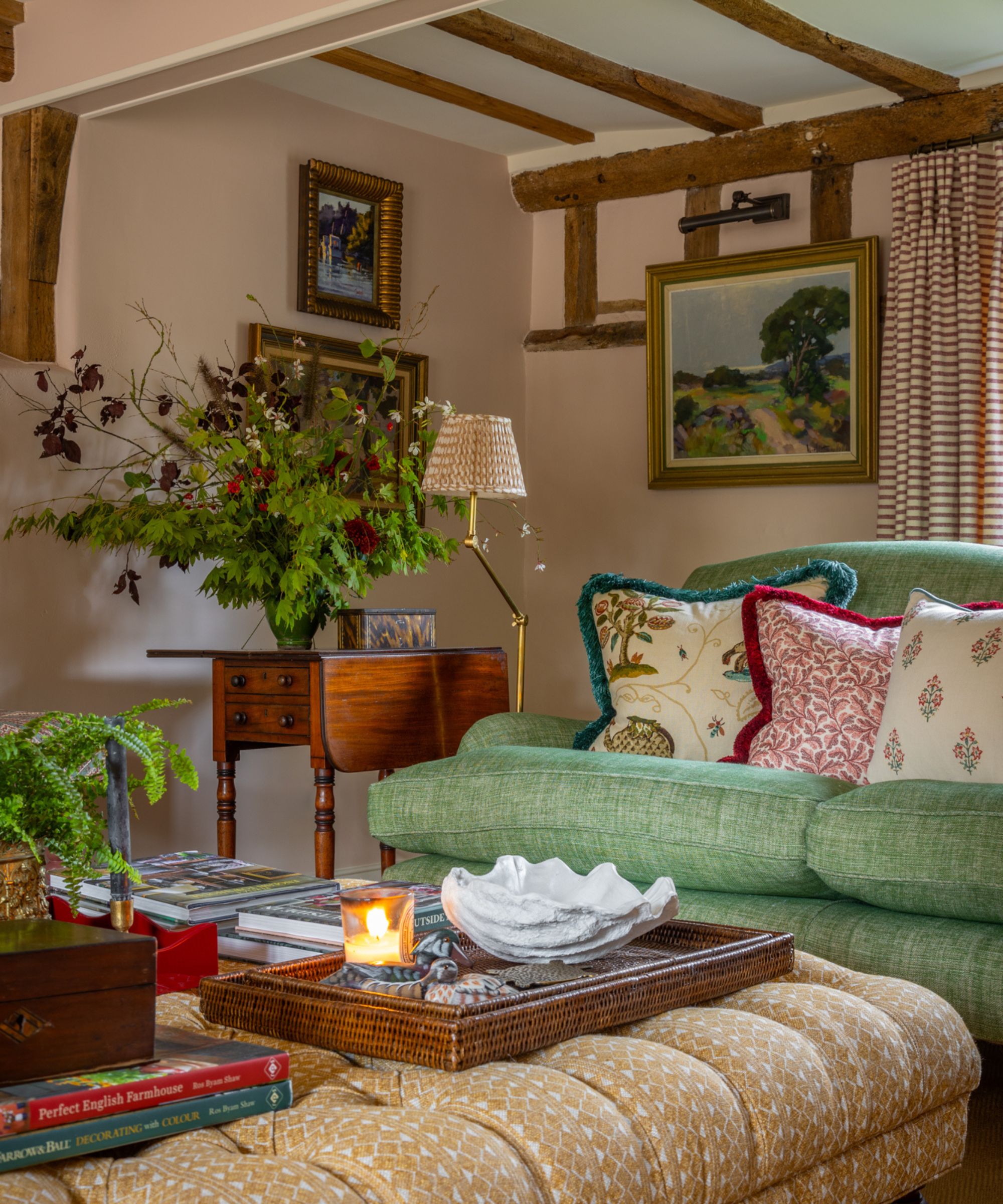
Layering is one of the most effective ways to create warmth, adding depth and character through textiles, patterns, and accessories. Interior designer Sean Symington says: 'For me, it’s all about layers, layers, layers. Stack coffee table books on your ottoman, light a candle with a beautiful scent, and keep lighting low with table lamps with gathered shades for extra softness.;
'Add large, fluffy throw pillows, a soft rug underfoot, and seasonal florals in a lovely vase to bring life into the space,' he adds. Decorating with patterns will make your living room feel more layered and eclectic, adding to its homely, inviting feel.
'When beginning a project, I consider color, print, and texture in equal measure,' adds Emma Sims Hilditch, who heads up interior design agency, Sims Hilditch. 'We then begin the layering process, adding smaller scale fabrics for throw pillows and lampshades, weaves for upholstery, and perhaps a grass cloth or linen for the wallpaper to add texture,' she suggests.
3. Choose a warm color scheme
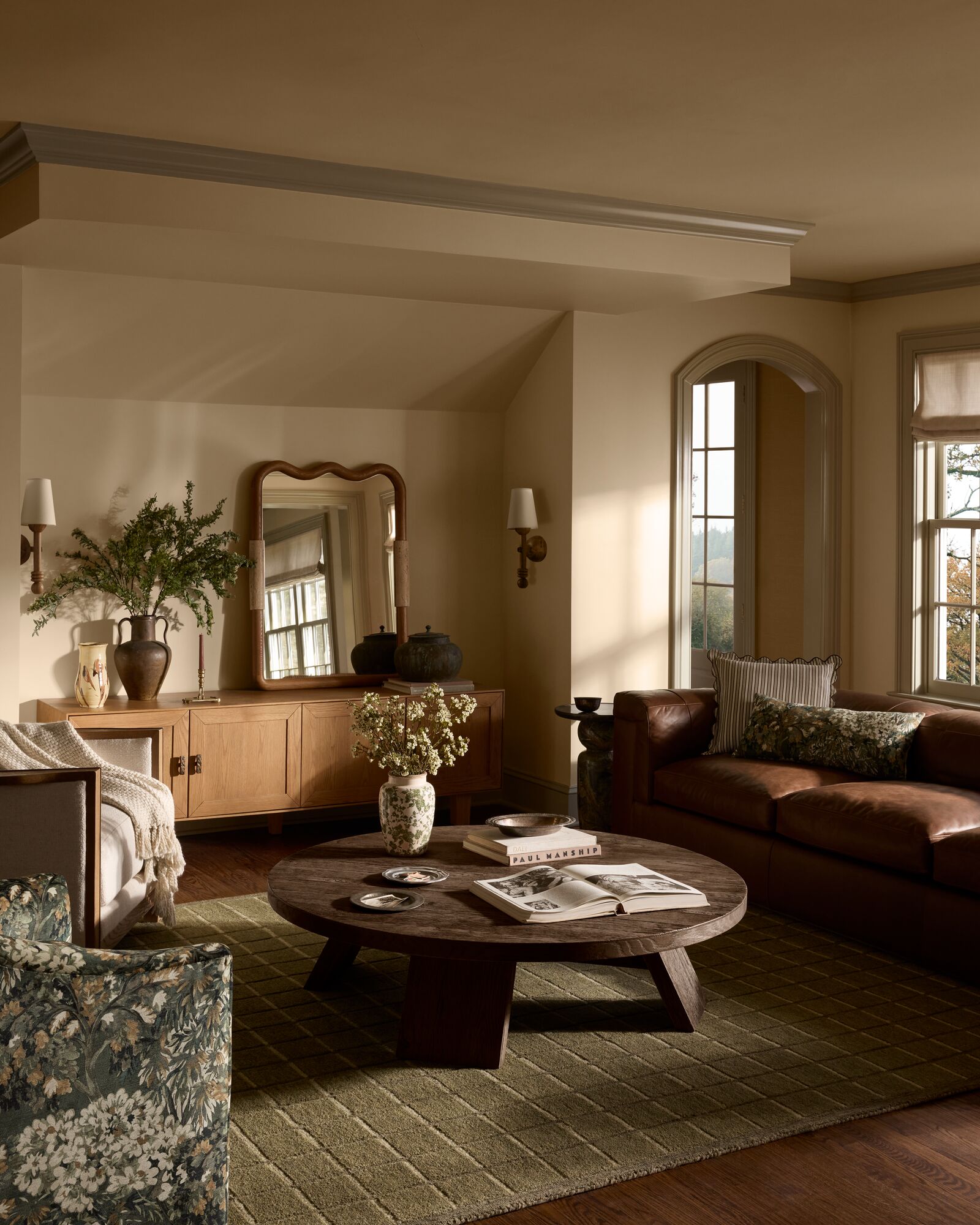
Color plays a powerful role in making a living room feel cozy, and choosing a warm color scheme is one of the simplest ways to transform the atmosphere. 'The key to cozy living room decor is warmth and texture,' says interior designer Kathy Kuo. 'You want your space to feel seasonal, inviting, and luxuriously relaxing.'
That doesn't mean you need to repaint your space, add in a few carefully chosen homewares and accessories in warm spice tones to ensure your living room is ready for the colder months.
'Try adding earthy living room color tones like terracotta, sienna, and mahogany and mixing different woven textures together,' she suggests. 'Finally, tie your cozy decor together with a seasonal scented candle that evokes all the warm and fuzzy feelings of home at its best.'
If you're looking to decorate with more earthy colors this fall and winter, look to make a shift away from cooler tones like gray and white and instead embrace color drenching with shades like rich browns, soft biscuit tones, muted greens, and warm ochres that provide a sense of warmth, making the room feel grounded.
4. Play with texture
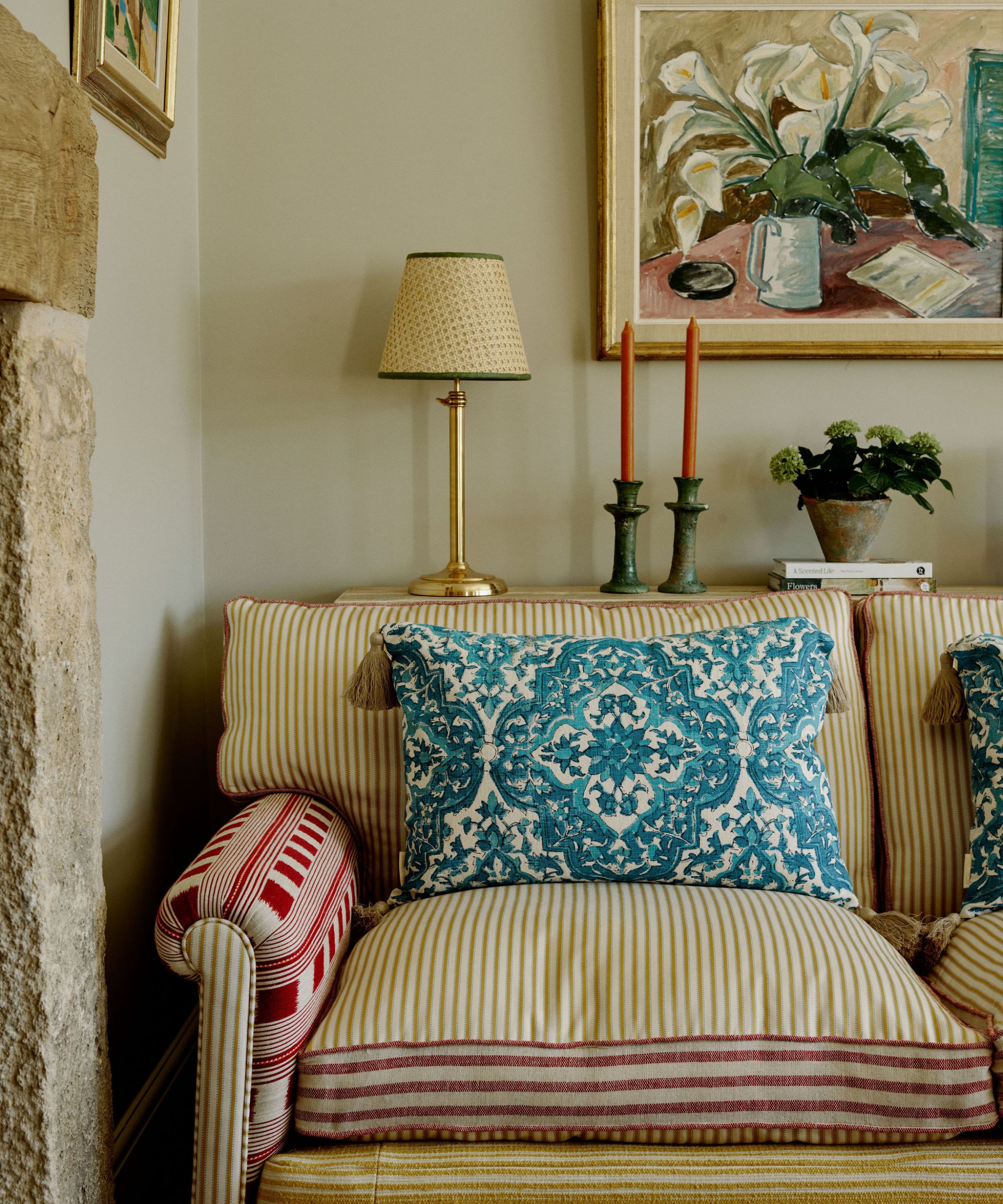
Texture in interior design is one of the most effective tools when designing a snug space, adding depth and tactility that instantly softens a space.
'Cozy interiors are about creating a sense of ease, not simply adding more,' advises interior designer Lauren Gilberthorpe. 'Layers of texture are essential: wool, linen, and cashmere sit beautifully together and instantly soften a room.'
'We’re leaning into oversized, ultra-textured materials,' adds Kristina Khersonsky of STUDIO KEETA. 'Think chunky knits, mohair, or fuzzy wool throws, especially in unexpected color combinations or bold patterns. These kinds of pieces instantly soften a living room while still making a visual statement. It’s not just about layering softness; it’s about choosing materials that feel good and add tactile richness to a room. Bonus points for pieces with color blocking or dimensional texture, they make a cozy room feel intentional, not sloppy.'
5. Soften with plenty of throw pillows
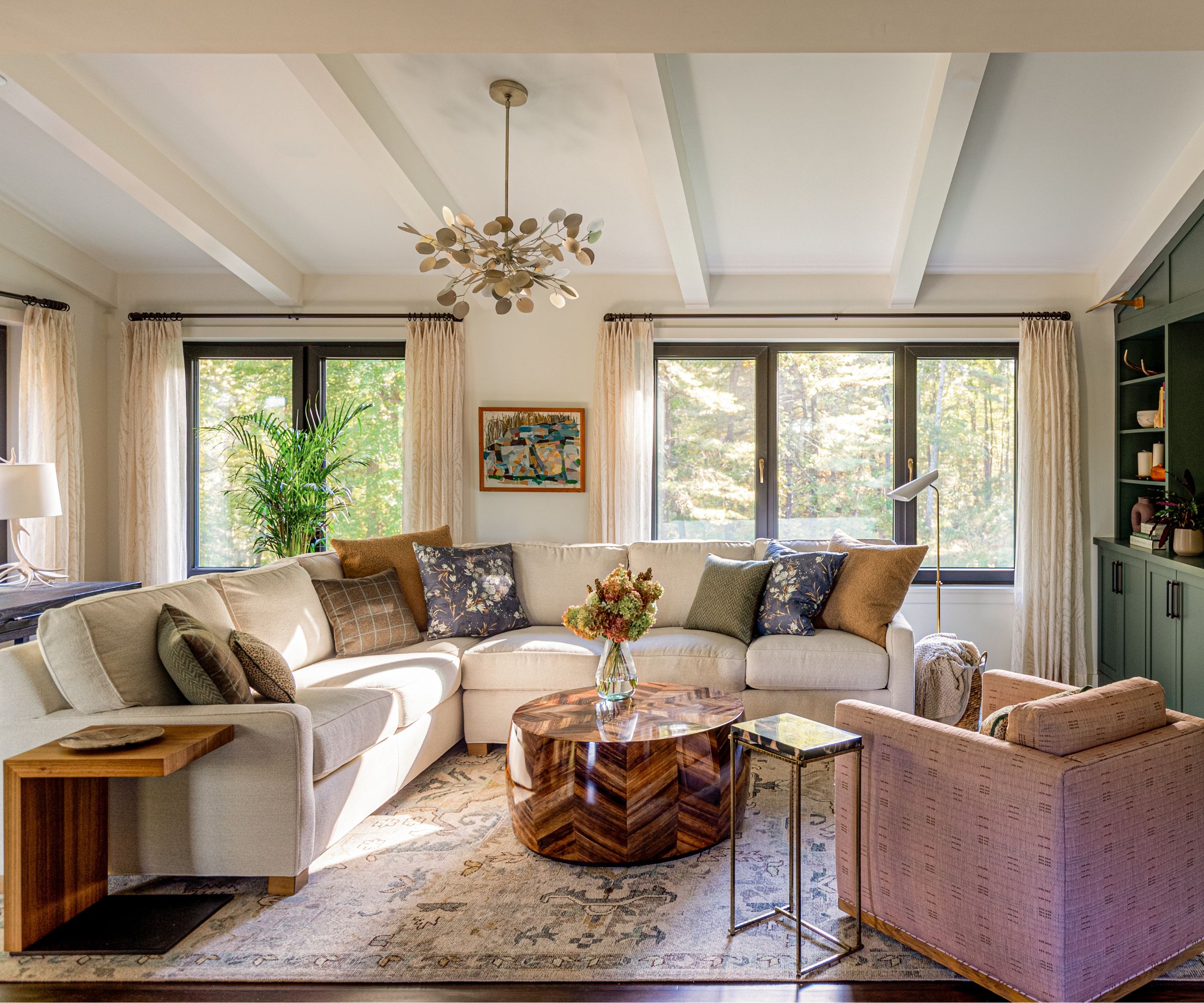
As well as being a great way to keep up with the latest living room trends, a biannual throw pillow update can also be all it takes to adapt your cozy living room ideas to the changing seasons. Cottons and linens work well in summer, while more cosseting fabrics are perfect in winter.
Interior designer Jeanne Barber, founder of Camden Grace Interiors, recommends: 'To create a cozy space, we recommend mixing pillows in varied sizes and textures – velvet, wool, and linen – along with complementary patterns for a curated, collected look,' she says. She suggests leaning into timeless warm neutrals like cream, beige, camel, and taupe as a versatile base.
For a more indulgent touch, Sean Symington suggests 'pillows with fringe add that extra touch of indulgence while artwork on the walls not only brings character and depth but also helps cocoon the room, making it feel warm and inviting.'
For inspiration, look to our edit of the best fall throw pillows like the budget-friendly Brown Stripe Ruffle-Trimmed Cushion Cover from H&M.
6. Add extra warmth and comfort with plenty of blankets
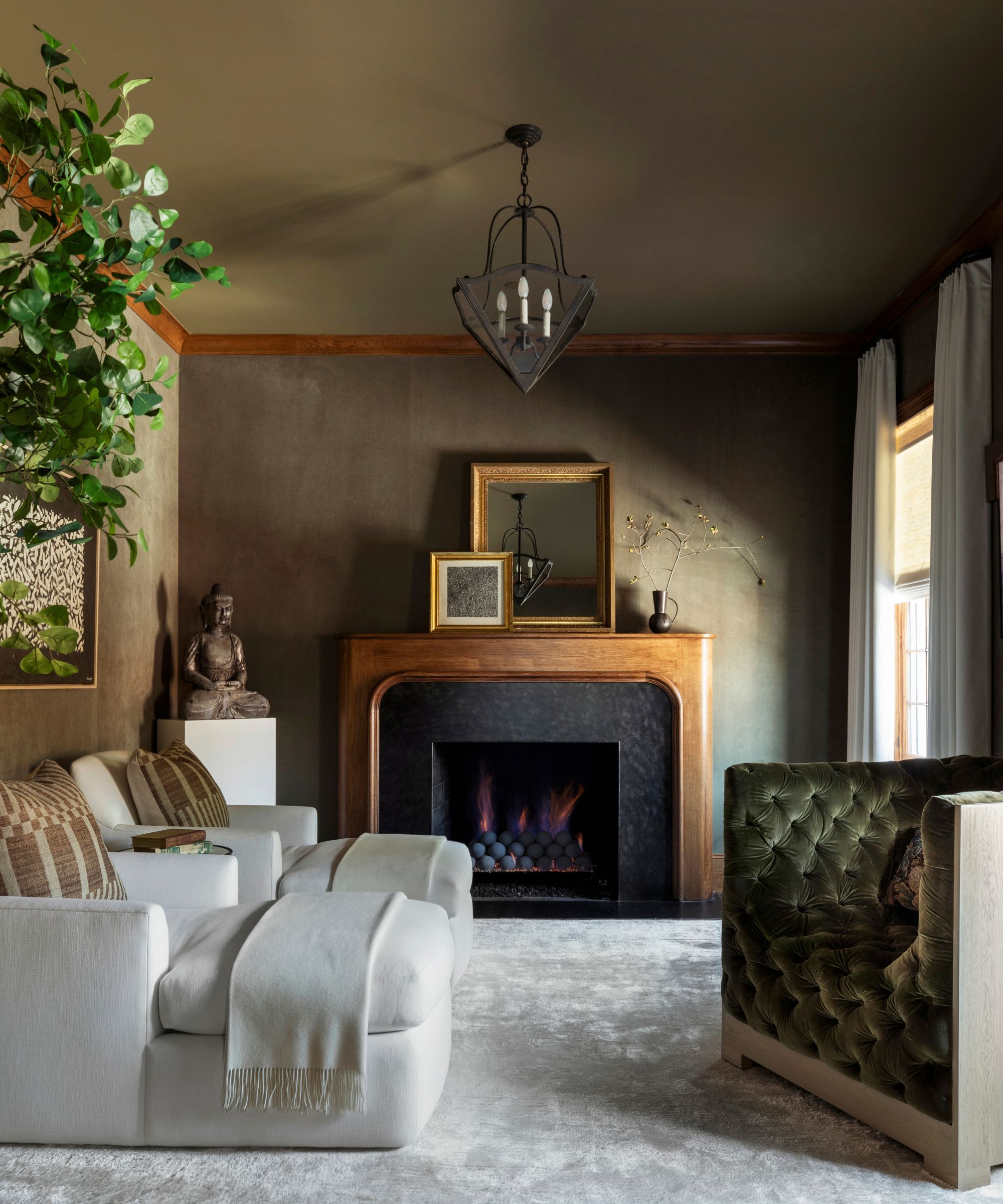
Few things evoke a sense of coziness better than soft, knitted textiles. Layers of throws and blankets in chunky knits are a must-have for creating an inviting, warm space. Draped casually over the back of a sofa or folded neatly in a basket beside a chair, throws are also an easy way to add color and texture to the space.
'Playing with materials is a great way to add a cozy factor or make your home feel like the seasons are changing,' advises Kristina Khersonsky. 'When it comes to selecting something as simple as a throw, opt for ‘hairy’ wools or long mohair,' she suggests. 'Don’t be afraid to go for one with a fun pop of color or pattern.'
For a hygge approach, try adding a Scandinavian quilt like the heirloom-style Hudson Valley Star Quilt from The Six Bells.
'I love the idea of adorning your sofa with a mix of throw pillows with different textures, like chunky knits, distressed leather, and even hair-on-hide,' suggests Kathy.
7. Add warmth underfoot with rugs
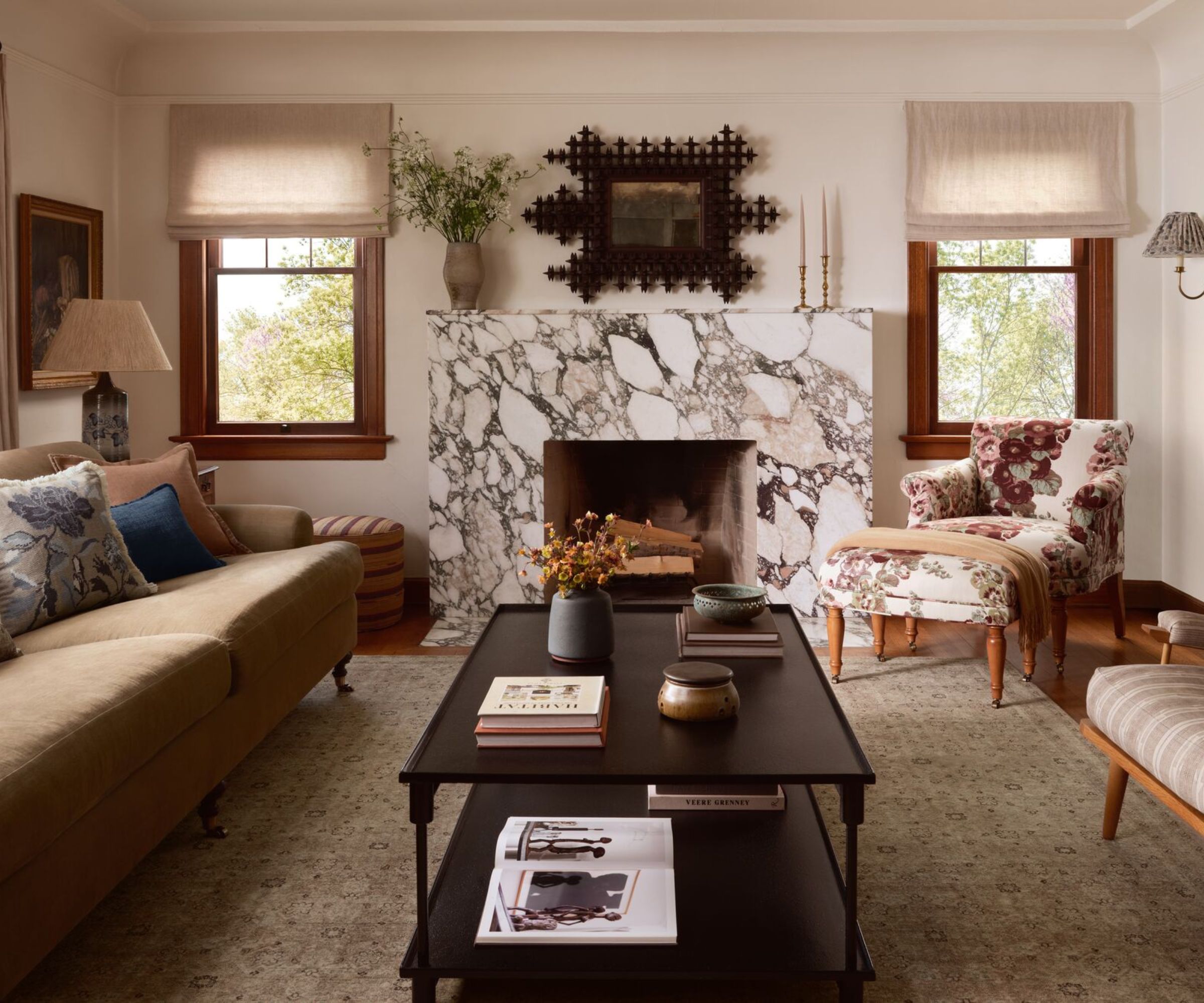
When it comes to living room flooring, nothing beats fitted carpet or a deep pile rug for adding coziness. As well as offering a luxurious, soft layer to sink your feet into after a long day, living room rugs also help insulate rooms and deaden sound, too, bringing a sense of calm and tranquility.
Kailee Blalock of House of Hive Design Co. is a fan of adding extra textiles to create a cozy feel. 'Layering rugs not only gives a room a more complete look but adds texture, enhancing coziness,' Kailee says. 'Mixing colors and textures helps create a cozy, visually interesting environment.'
'Layer in a soft rug for depth and warmth underfoot, and incorporate natural wood elements which add richness and organic character,' adds Jeanne Barber.
Lone Fox's collaboration with Joon Loloi is worth having a scroll through, with the Hollyhock Printed Tapestry Rug catching TikTok's attention. Meanwhile, their drop with Heidi Caillier [seen above] features gorgeous designs like the floral Aster Rug.
8. Create a layered lighting scheme
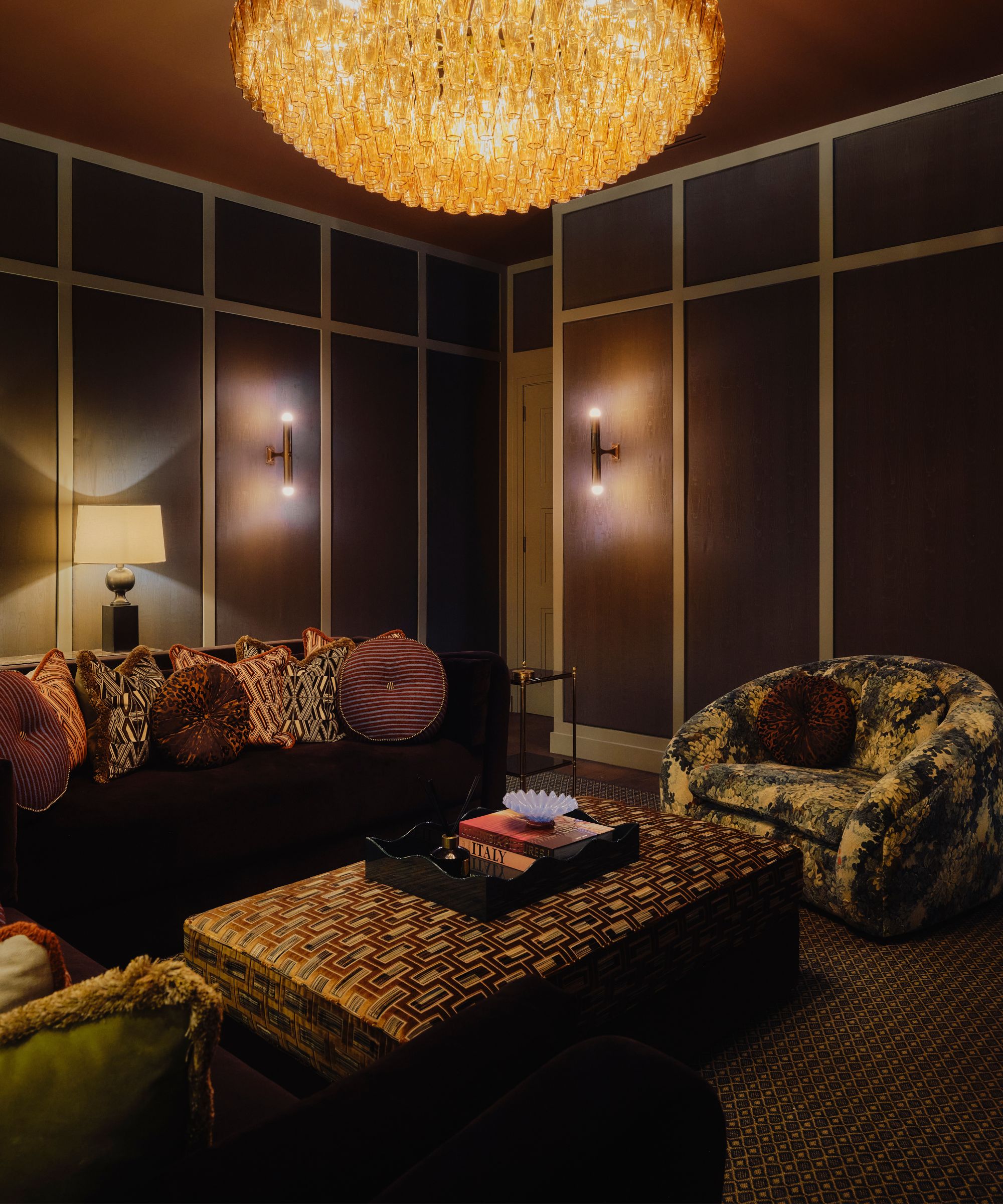
Living room lighting can instantly change the look and feel of a room, so it should be considered carefully at the beginning of any room design. To create a cozy yet functional space, be sure to include plenty of ambient lighting and task lighting as part of a layered scheme.
'Always remember that ceiling lighting (such as pendants, spotlights, and recessed lighting) is a great general light source but is not enough on its own,' says Emma Deterding, founder of Kelling Designs. 'Floor and wall lamps are a great alternative to having the main lighting switched on as they often add a warming glow that's ideal for those cozy evenings.'
In order to create a softer ambiance, interior designer Benji Lewis has a few tried-and-tested lighting ideas to follow. 'Use side lighting only, like lamplight with patterned gathered lampshades on your table lamps. Of course, light a fire if you have a working chimney – and light some candles,' says Benji.
You want to avoid bright, direct light and instead go for softer, diffused light from multiple sources. Incorporate a mix of table lamps, floor lamps, wall sconces, and candles to cast a glow around the room. Place these lights at varying heights to create pockets of warm light, and be sure to use task lighting for functionality, like reading by the fire.
Designer Sarah Sherman Samuel's latest drop at Lulu and Georgia has some of the most stylish lighting launched this year, including this adorable Ribbon Candle Sconce.
9. Choose skirted furniture
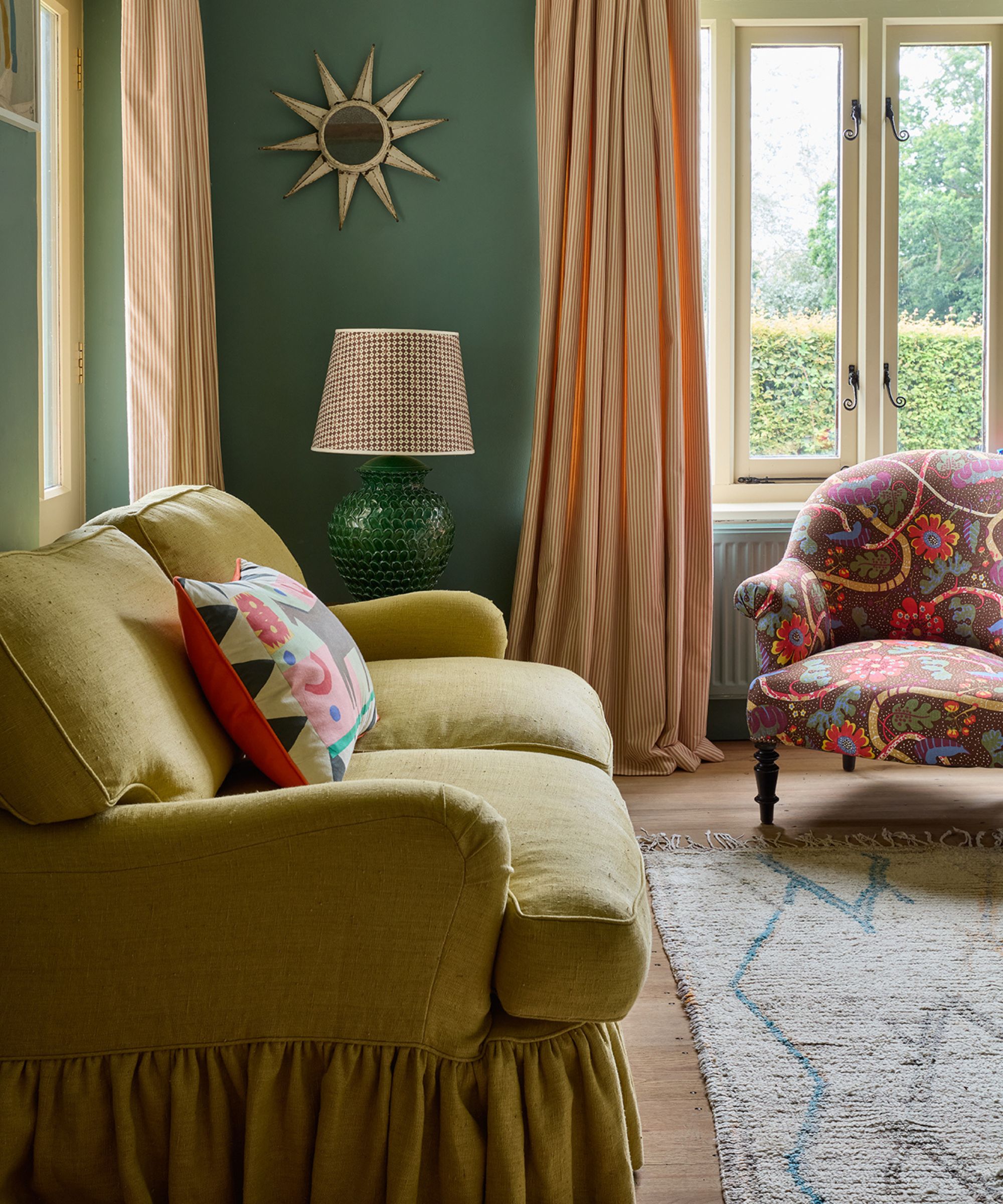
Skirted furniture is making a comeback, and for good reason. It brings a sense of retro charm and elegance to a room by adding an extra layer of fabric and concealing the legs of chairs, sofas, and ottomans for a more relaxed appearance.
'When it comes to upholstery, an effective way to add instant character is by adding a skirt or having a loose cover made up,' suggests Holly Vaughan, co-founder of Vaughan Design & Development and designer of the living room seen above. 'It quickly feels more relaxed, pared back and inviting.'
Shea Mcgee is also a fan of the look, and skirted furniture pieces feature heavily in her fall drop at Target, with the Ruffle Slipcover Dining Bench and this Gingham Sage Vanity Chair catching our eye.
If you're considering the legs vs no legs debate for your furnishings, to create a cozier feel, the answer should always be: skirted. Skirted furniture has a way of making a room feel more complete. The flowing fabric adds softness and warmth, and when paired with cozy textures like wool throws or cushions, it elevates the overall comfort of the space.
10. Bring the outdoors in

Seasonal greenery, branches, or even dried foliage add texture, movement, and a natural warmth that instantly softens a space.
Designer Chloe Wills, founder of Interiors by Chloe, suggests 'One idea to make a home feel personal and cozy is using autumnal leaves from the garden to create simple, textural art,' she says. 'Pressed leaves mounted on a beautiful card and framed in oak can be a subtle nod to the season.'
For a simple styling trick, arrange a few branches in an oversized vase for height and drama, or tuck small bud vases with single stems onto shelves and coffee tables. Layering greenery, flowers, or foliage throughout creates moments of movement and freshness, for a living room that feels inviting year-round.
11. Shop vintage for characterful pieces
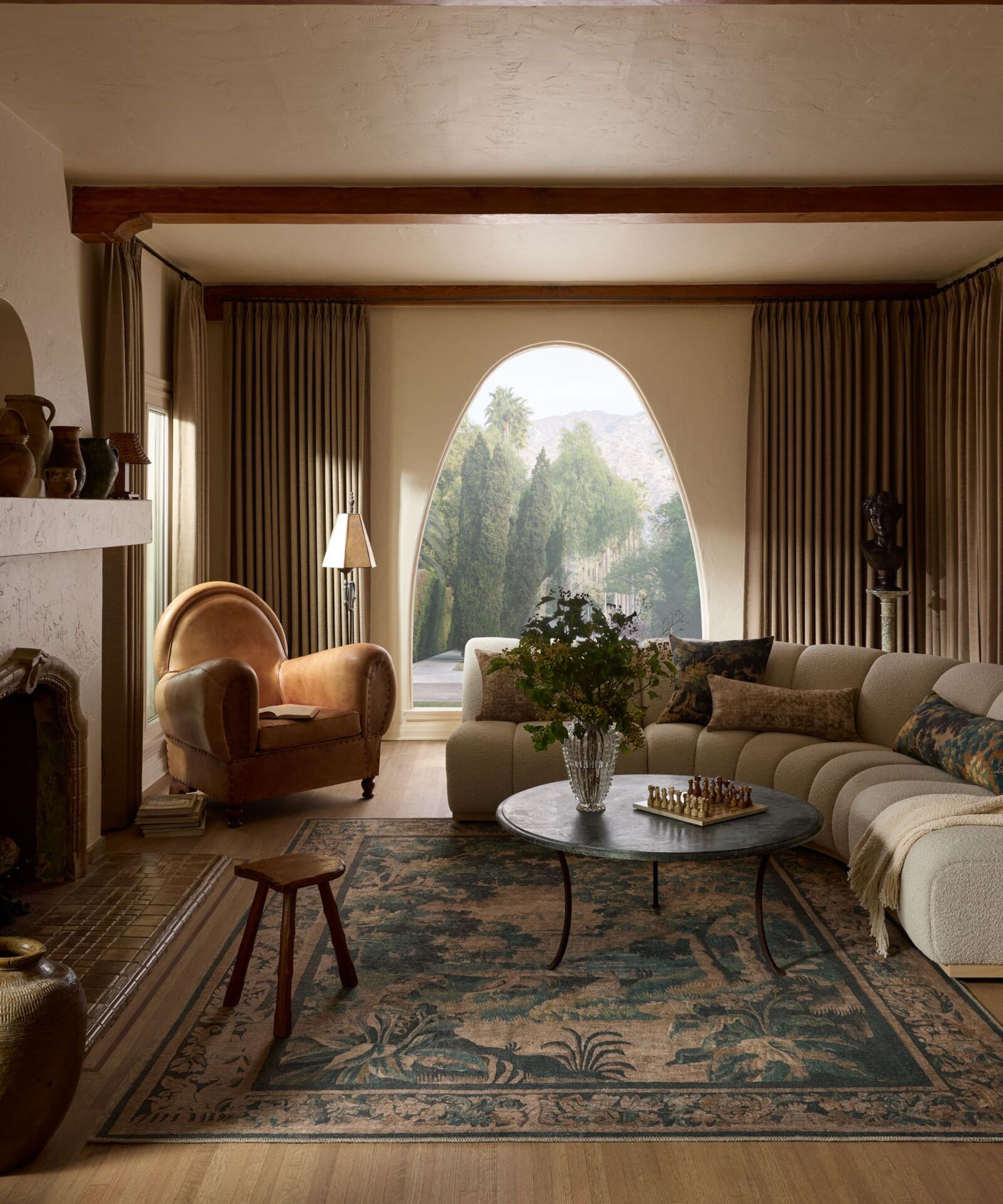
Collecting and curating a display of vintage pieces throughout your home is an interior designer trick used to make rooms feel considered and 'real' – as opposed to a show home. This, in turn, will help you to feel more at home in the space, and like you're able to fully relax into it.
'Vintage items, particularly books, instantly add warmth and a lived-in feel to any space,' says Kailee Blalock, who loves decorating with vintage.
'Creating a cozy home is all about layers and textures that invite you in,' says interior designer Marie Flanigan. 'I love bringing in one-of-a-kind pillows or throws, they feel personal and collected, giving each space its own story. Vintage or handmade rugs, like Turkish or kilim pieces, add depth and a sense of history underfoot.'
'Pairing these textures thoughtfully throughout a room makes it feel both lived-in and effortlessly inviting, a place where you actually want to linger.'
12. Swap your drapes for something heavier
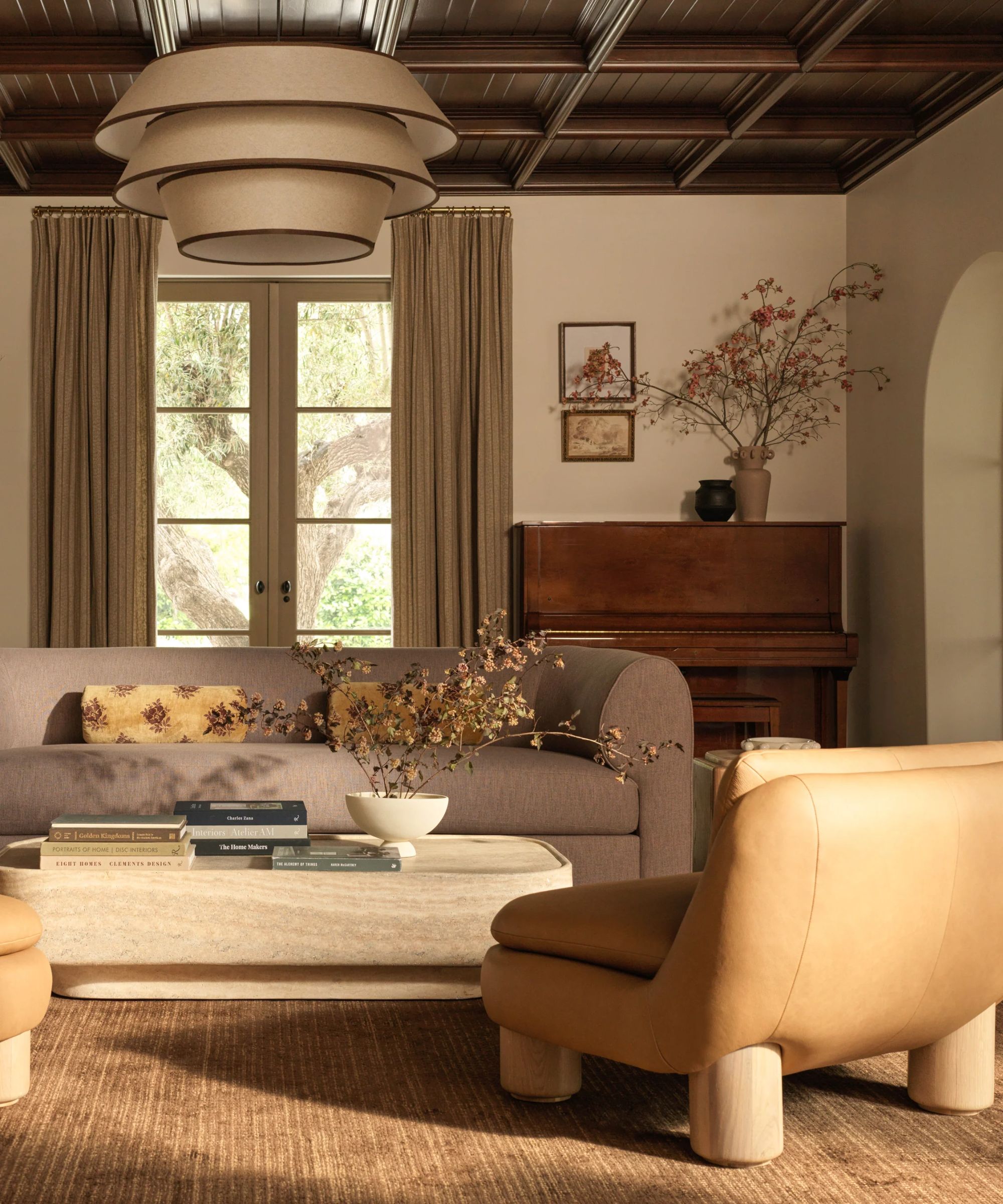
Never underestimate the cosseting capabilities of living room curtains. While blinds can be practical, drapes bring a softness and sense of comfort that transforms the atmosphere of a room.
Opting for heavier fabrics in autumn and winter not only adds color and texture but also helps retain warmth, making your living room feel instantly more inviting. Even if your window is small or awkwardly placed, as in this country cottage, a thickly lined curtain can add color and warmth.
‘Generous curtains in earthy tones create the perfect backdrop for cozy nights by the fireplace,’ says Rebecca Craig, lead designer at Sanderson. Whether you choose rich velvets, wool blends, or lined linens, heavier drapes in warm neutrals or deep, saturated hues can double as both insulation and design statement.
13. Wrap the room in fragrance
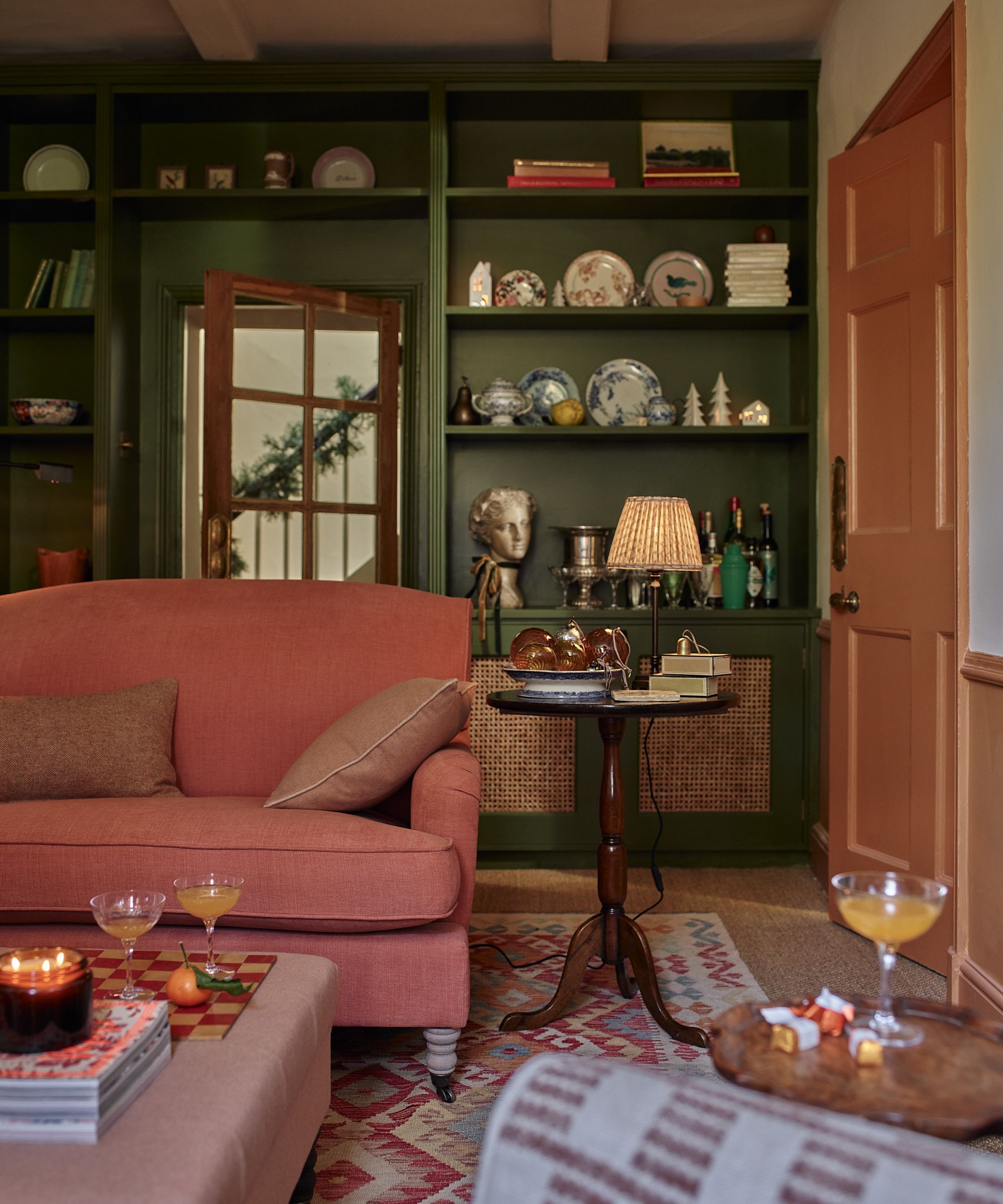
Cozy isn’t just about what you see and touch – it’s also about how a space makes you feel when you step inside. Scent is a powerful, often overlooked tool that can instantly transform the atmosphere of your living room.
'Scent can also transform how a space feels,' agrees Lauren Gilberthorpe. 'Fresh woody oak and bergamot, or the richness of worn leather, add another sensory layer that makes a home feel welcoming.'
‘Making a living room feel cozy is about the whole persona of the space and the energy it offers in the form of scent, touch, light, and sound, making a living room feel cozy,’ adds interior designer Julia Dempster.
Whether through candles, diffusers, or even a small bundle of dried herbs by the fireplace, incorporating fragrance adds another sensory layer, making your living room feel more inviting.
14. Create a cozy corner for reading
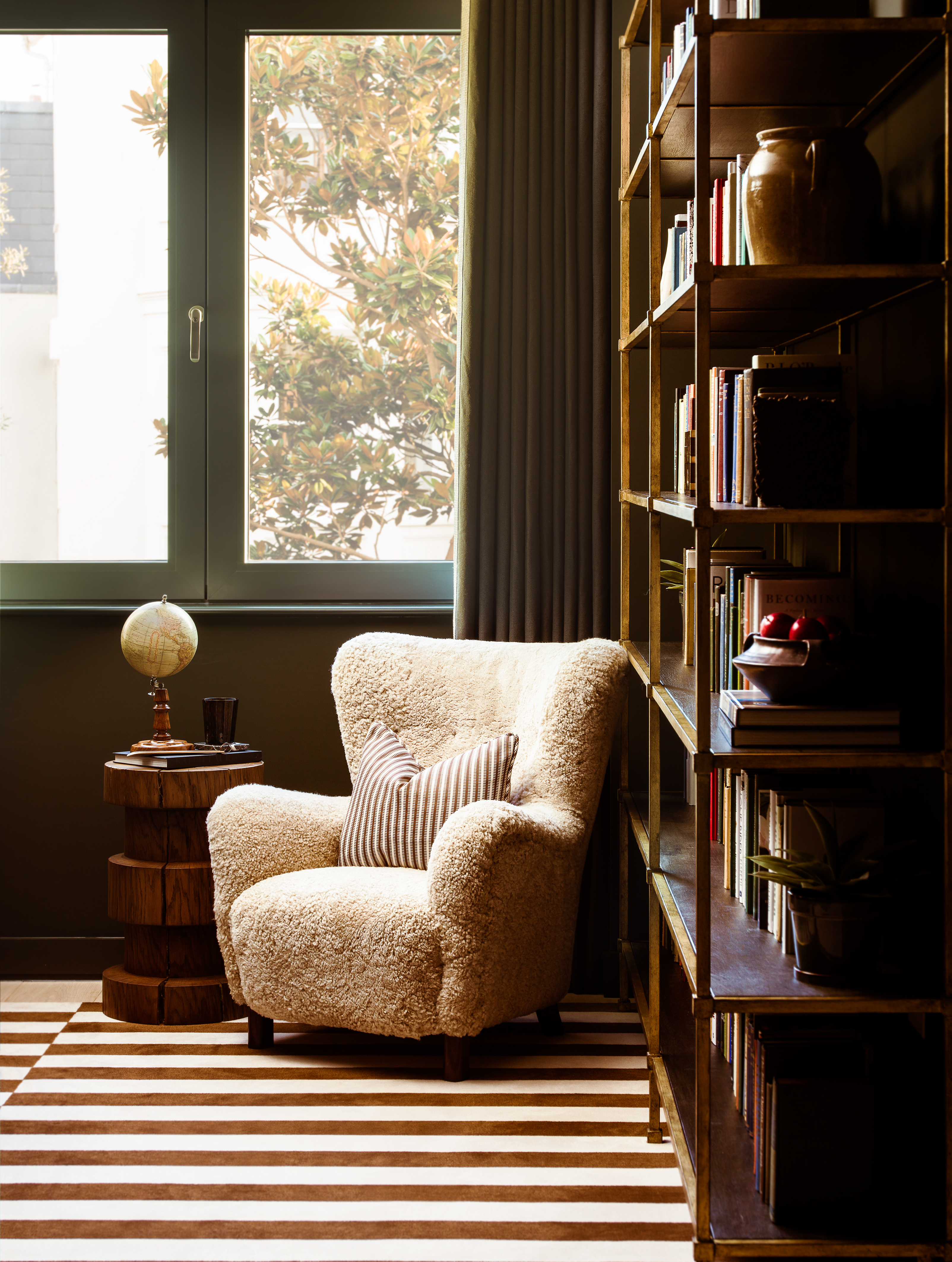
It's hard to imagine a cozy living room without including reading nook ideas. Envision an enveloping armchair and a bookshelf, the perfect corner to curl up in and enjoy a good book.
Even a small corner can be transformed into a snug retreat with the right combination of furniture and accessories. An enveloping armchair paired with a tiny table not only provides a comfortable spot to curl up with a book but also creates a separate zone for quiet relaxation, making the space feel cozy and secluded.
It also offers a separate zone for relaxing activities, making your space feel even more bespoke. With its high back, exaggerated curves, and fleecy fabric, this armchair, seen above, offers the ultimate in comfort, while the dark wood, deep green walls, drapes, and metallic touches all add to the warmth and intimacy of the space.
'The high-impact texture of this boucle armchair sets off the sleek walnut shelving and the contemporary striped rug in this quiet reading nook,' say the team at Albion Nord.
15. Finish with personal touches
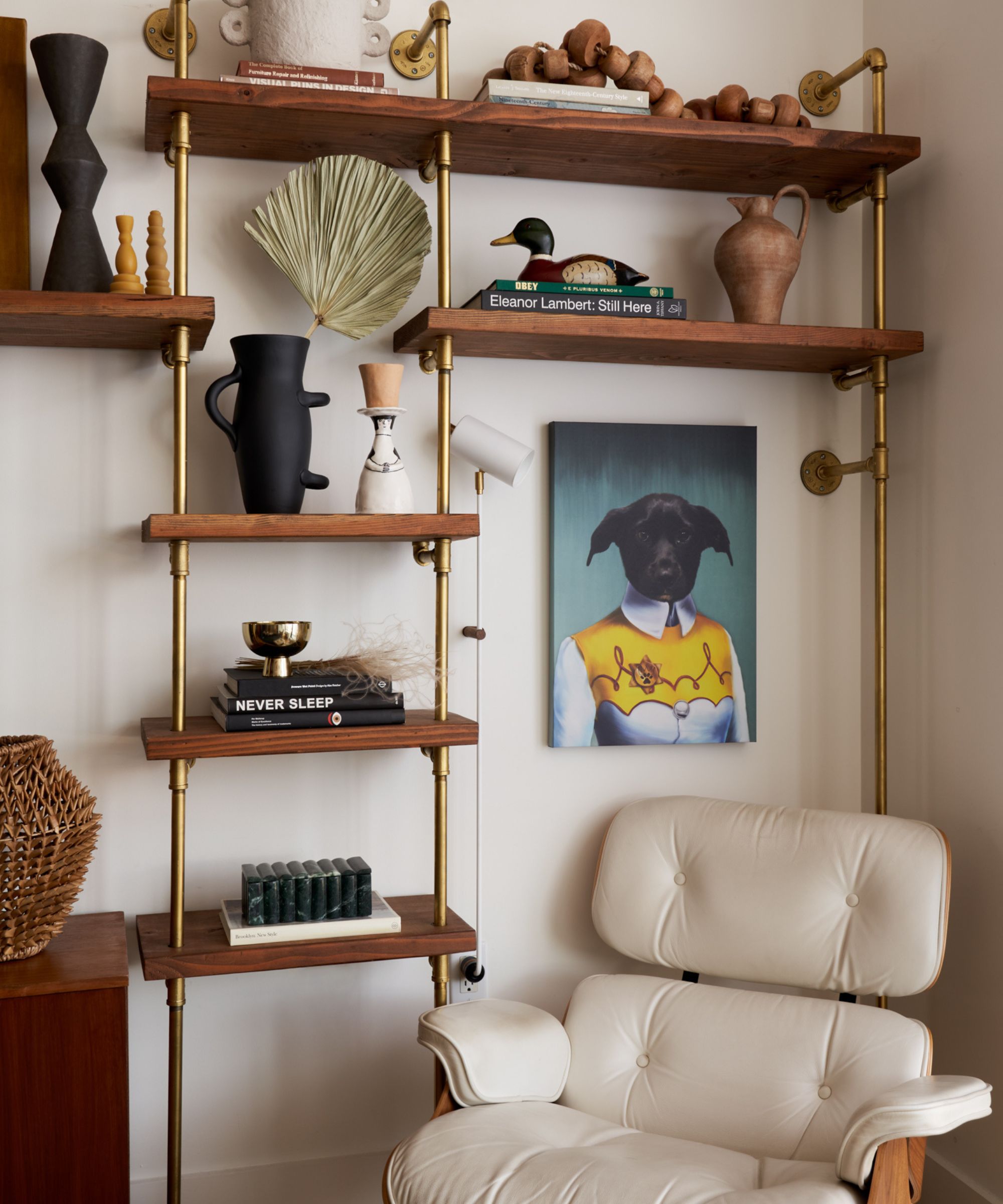
The final layer of a truly cozy living room comes from the personal objects you choose to display. These are the pieces that make a space feel lived-in and meaningful, rather than perfectly styled but impersonal.
Lauren Gilberthorpe says: 'Personal objects should never be overlooked. A stack of well-loved books, meaningful art, or ceramics collected on travels brings a human touch that makes a space feel lived in rather than styled.'
'For cozy decor, the most important thing is keeping it personal,' agrees Molly Torres Portnof of DATE Interiors. 'There's nothing cozy about a random mix of items that don't carry any meaning or emotional weight. Whether it's a portrait of your pet, a collection of vases from different cities you've visited, or books passed down from your parents, try to incorporate decor items that spark comfort, memories, and warmth.'
Shop cozy living room decor
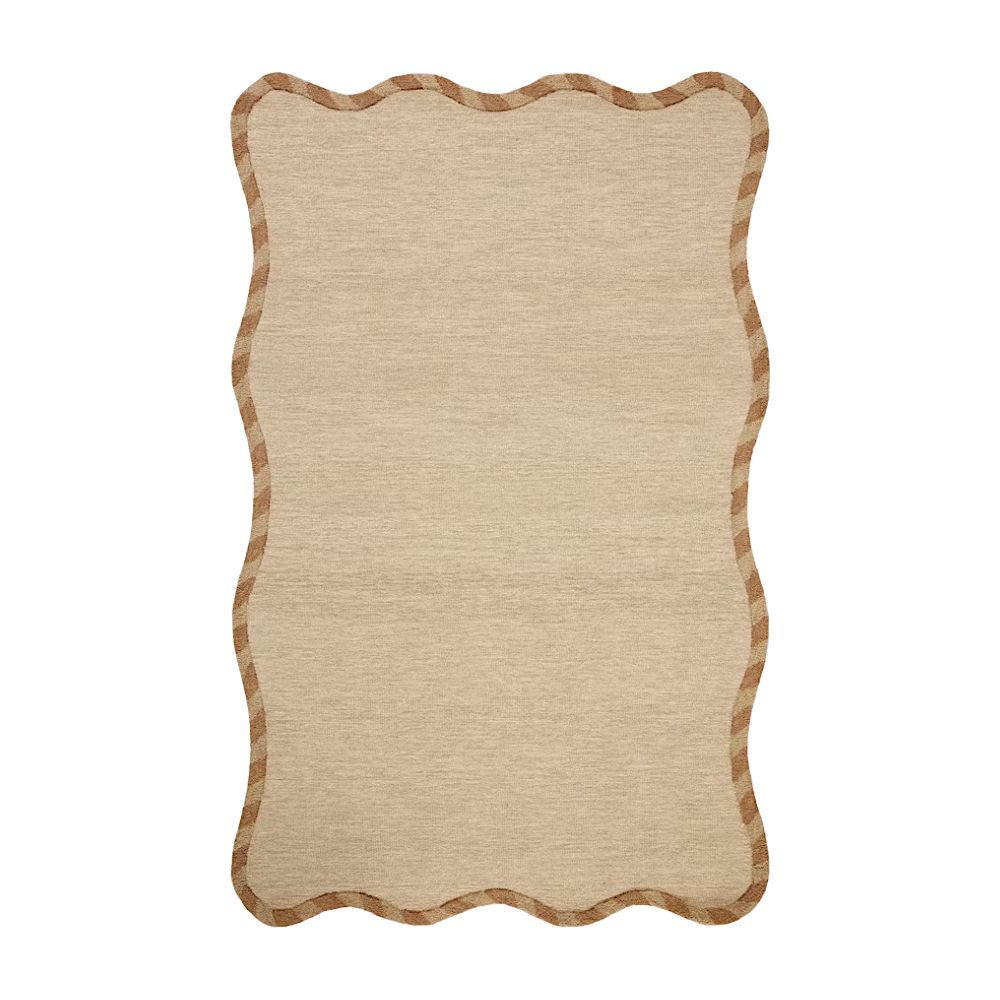
Just dropped in the Lone Fox's second collaboration with Joon Loloi, the 'Lariat' rug has been hand tufted by artisans in Indian, using a wool blend. The wave design and rope border add a touch of whimsy.
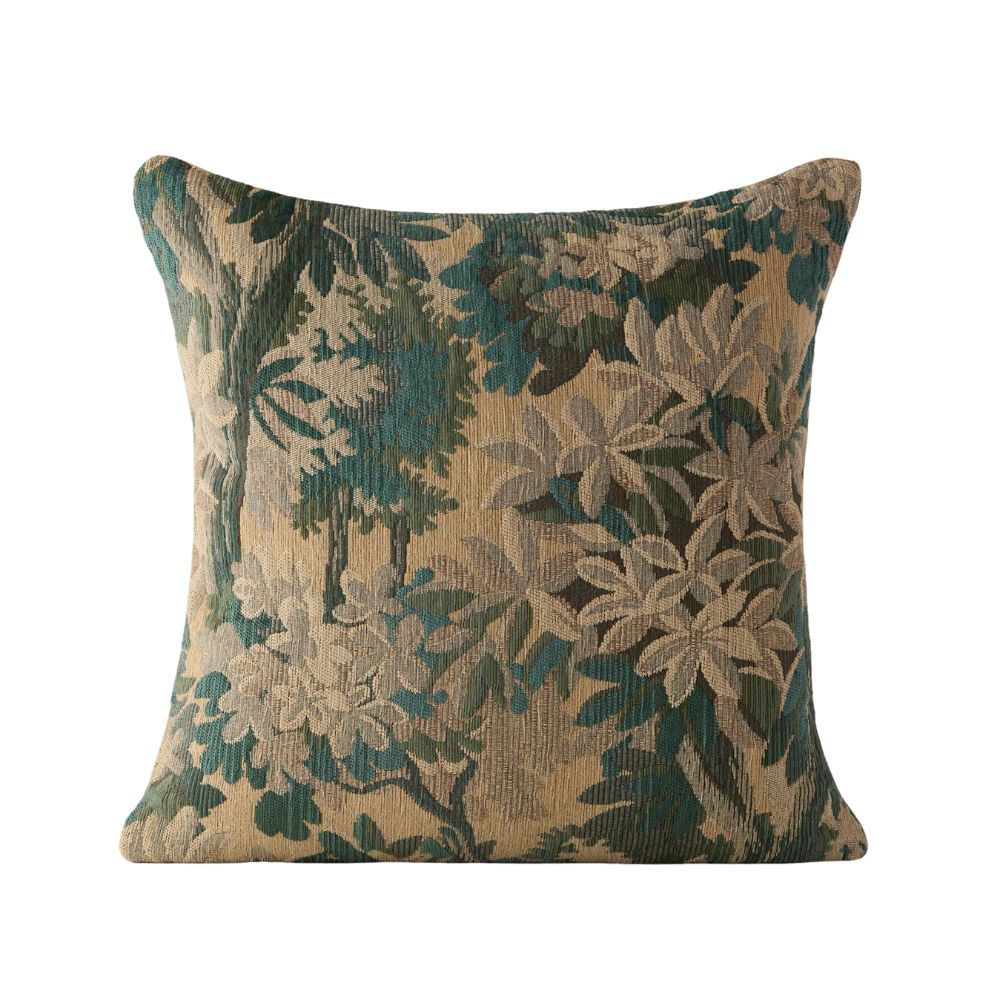
Decorating with tapestry print is a huge designer-approved trend in 2025, and there is no easier way to adopt a new style than with an accent pillow. This one features a rich botanical design in jade green.
Creating a cozy living room is all about designing with ample texture, warm colors, and a mix of nature-inspired patterns. If you want to make other rooms in your home feel more inviting and snug, our cozy bedroom ideas might be a good place to start.

Charlotte is the style and trends editor at Homes and Gardens and has been with the team since Christmas 2023. Following a 5 year career in Fashion, she has worked at many women's glossy magazines including Grazia, Stylist, and Hello!, and as Interiors Editor for British heritage department store Liberty. Her role at H&G fuses her love of style with her passion for interior design, and she is currently undergoing her second home renovation - you can follow her journey over on @olbyhome

